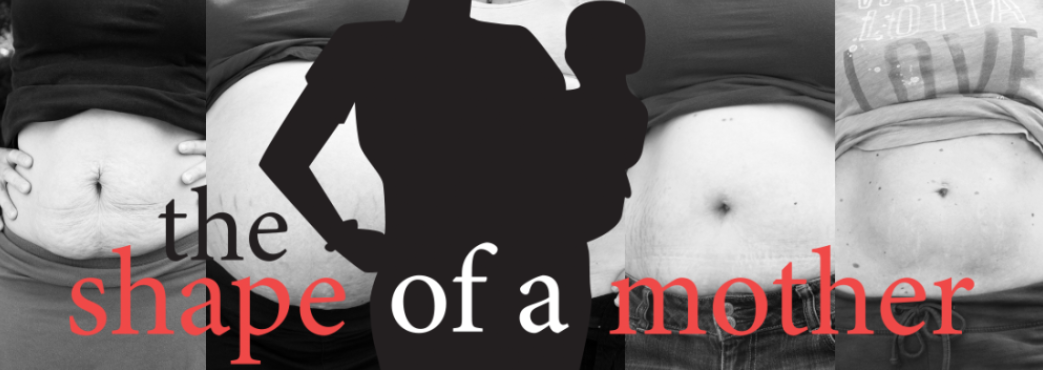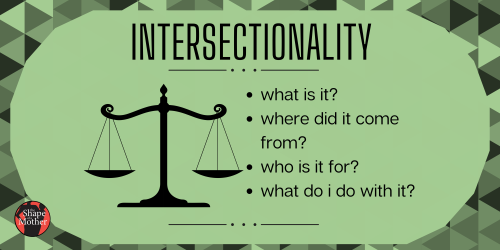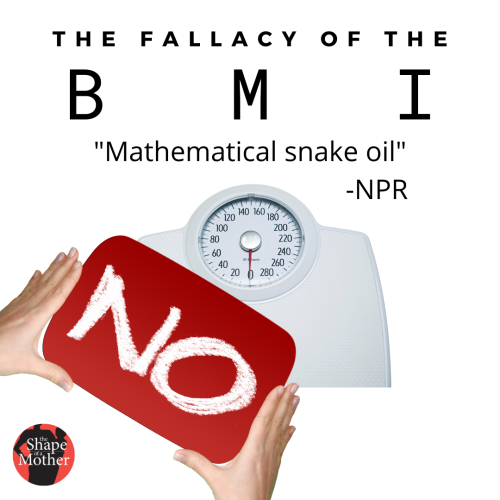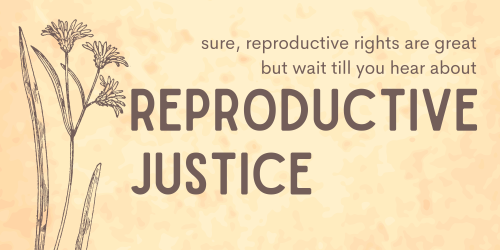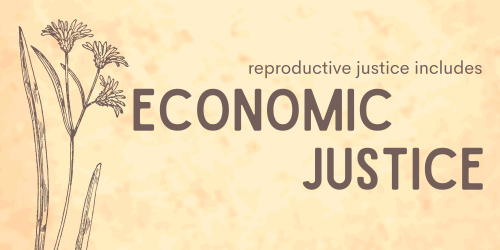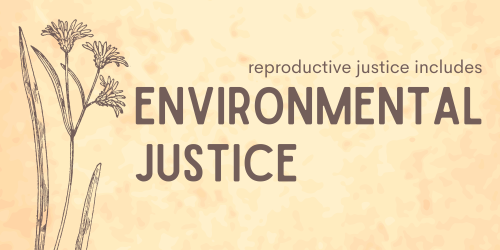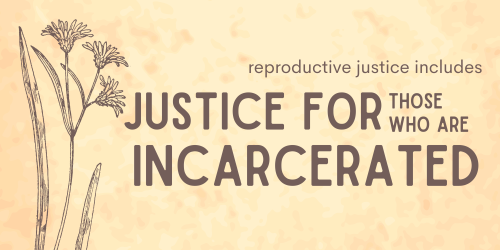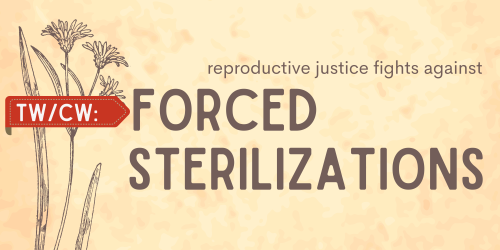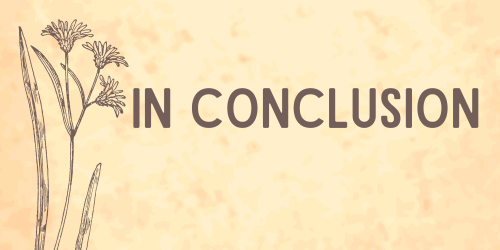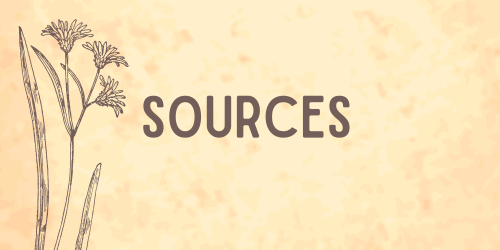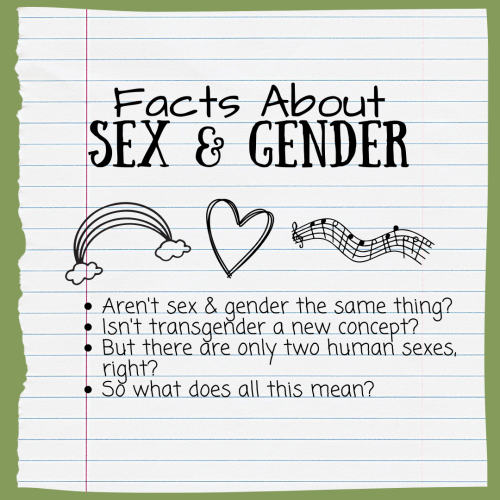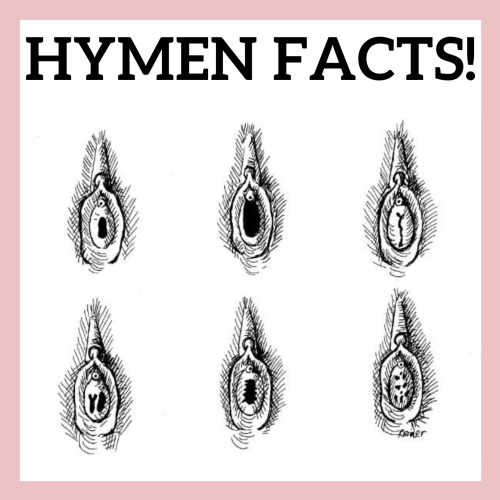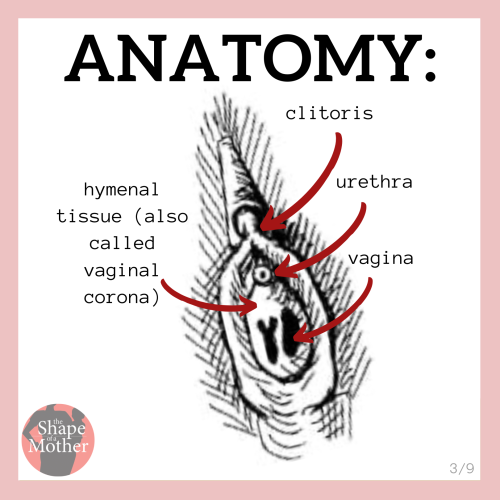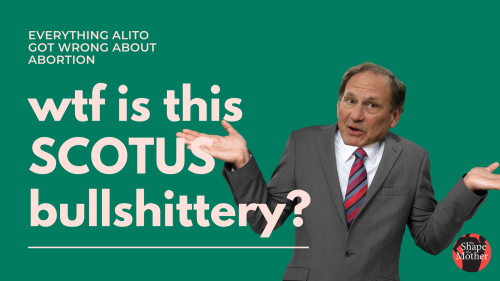
I know it’s almost two months since Alito’s draft opinion was leaked and maybe it’s not a topical issue anymore. Also there are definitely other sources talking about the impending likelihood of Roe v Wade being overturned and I hope we are all taking the time and energy we can spare to fully understand this vital issue. But I wanted to create a source that talked specifically about abortion itself and where he is fundamentally wrong about it. I have also highlighted some other arguments that are dangerous at best, and I’m including here and there some information I have gleaned from other sources such as medieval historians (a moment of silence for the fact that we have to turn to medieval historians during this fight to protect abortion wtf). I am no lawyer myself and there is much that I cannot speak to. But I am a person living in this nation and I recognize that sometimes we must choose to drop archaic beliefs in the name of equity and freedom and so in that sense I maintain that I have the qualifications to question his logic, at times even when his opinion is backed up (supposedly) by legal precedent.
Ready?
I know. Me neither.
Here goes!
(BTW, TW for gendered language. I am working hard to keep my own parts of this gender neutral because not all people who need abortions are women, but Alito is a little less, uh, woke in this area. And every other area. I’m keeping his comments as is for clarity.)
Alito wrote:
“The legislature then found that at five or six weeks’ gestational age an ‘unborn human being’s heart begins beating. . .’” (p6-7)
Completely ignoring the fact that for some reason we are letting legislatures do medical research and make medical pronouncements, this is factually misleading.
Y’all already know from my Abortion Facts infopost that the heartbeat detected at six weeks gestation is not a fully formed heart. It is a few heart cells and heart cells are known to beat even in a petri dish which is obviously not a viable human, nor will it ever become one. Recent research has shown that the heart may not be completely formed until around 20 weeks gestation (1).
Alito wrote:
“And at twelve weeks the ‘unborn human being’ has ‘taken on the human form at all relevant respects.’” (p7)
What? No really, what?
Who defines relevant? What is the definition of relevant? Because a fetus at 12 weks gestation cannot survive outside the uterus, which is a pretty relevant part of being a human, I think. This is an unscientific statement that holds no real meaning so I cannot debunk it with scientific facts, but I can discuss bodily autonomy here.
In no other situation is keeping another person alive forced upon a living or dead human. We cannot force someone to donate blood to save a human life. We cannot take someone’s organs to save a life without their consent – not even if the donor is deceased and will never need the organs again. Why do we force people to carry pregnancies to term, then?
It’s punishment. That’s what it is. Punishment for having sex.
Alito wrote:
“[The legislature] found that most abortions after fifteen weeks employ ‘dilation and evacuation procedures which involve the use of surgical instruments to crush and tear the unborn child,’ and it concluded that the ‘intentional commitment of such acts for nontherapeutic or elective reasons is a barbaric practice, dangerous for the maternal patient, and demeaning to the medical profession.’” (p 7)
That’s a lot. Let’s break it down.
First of all, a D&E is a procedure done for second trimester abortions.
The claim that the procedure will “crush and tear” a fetus is designed to elicit an emotional response based on the presumption that being crushed and torn is painful and frightening. And it absolutely would be for you or I. But nearly all abortions take place long before the fetus has any of the physical structures which transmit pain. Furthermore, the capacity to comprehend pain doesn’t exist within the brain until around 28 weeks gestation (2).
(And if you want to limit later abortions, the most complete way to do that is to make sure abortions are accessible for all geographical locations, all incomes, all genders, and all races because, aside from those tragedies where a wanted pregnancy must be terminated for health reasons, the vast majority of later abortions happen because people lack access and it takes time to gather resources.)
The claim that a D&E is dangerous for the gestating parent is patently false (3).
The claim that a D&E is demeaning to the medical profession is nothing but Alito’s opinion. Once we have debunked these other errors, we find that the procedure is not “barbaric” at all and that it is a simple, safe medical procedure. Mayyyyybe we let medical professionals decide what is or isn’t demeaning to their profession? Just an idea.
Alito wrote:
“Roe, however, was remarkably loose in its treatment of the constitutional text. It held that the abortion right, which is not mentioned in the Constitution, is a part of a right to privacy, which is also not mentioned.” (p9)
Y’all.
This is actually chilling.
He is literally saying the constitution does not protect our right to privacy. People have been saying since May 3 that losing Roe v Wade is the first, incredibly dangerous step to losing our rights to privacy. Well, here it is in Alito’s own words.
You cannot want to ban abortions and also have your right to privacy. They go together.
Alito wrote:
“The regulation of a medical procedure that only one sex can undergo does not trigger heightened constitutional scrutiny unless the regulation is a ‘mere pretext[] designed to effect an invidious discrimination against members of one sex or the other. . . .’ And as the Court has stated, the ‘goal of preventing abortion’ does not constitute ‘invidiously discriminatory animus against women.’ (p10)
I mean. Let me just….
HAHAHAHAHAHAHAHA OMG HAHAHA
lol hoookay there, upper class white cishet male.
Alito wrote:
“…Abortion has long been a crime in every single state. At common law, abortion was criminal in at least some stages of pregnancy and was regarded as unlawful and could have very serious consequences at all stages. American law followed the common law until a wave of statutory restrictions in the 1800s expanded criminal liability for abortions.” (p 15)
Here we begin with his series of historical arguments which date back to the 1200s and include some pretty blatant hypocrisy. There is much that I cannot say here because I have no training in law theory and no formal training as a historian. But I can say this: The world is not the same today as it was 200 years ago or even in the 1850s. We know more and we know better. When we know better, we must do better. Women/AFAB folx have always been oppressed in part by our ability to give birth. Lives were ruined and often ended by forced birthing. Why in the actual fuck would we think any of that was valid in our modern world of supposed equality? Especially not now that we understand more clearly the science behind fetal development? Just because someone held a value 200 years ago does not mean our society today holds that same value (I will be coming back to this idea at a later point in the post).
It is also vitally important to understand that abortion has always existed (and will always exist). People who did not want a pregnancy have always used various methods via various professionals to terminate unwanted pregnancies.
It is a modern Christian belief that life begins at conception. As Alito notes with regularity in his draft, historically it was only considered a crime after quickening (when the gestational parent can feel movement). And other cultures and religions hold different beliefs. In Judaism, for instance, life is considered to begin at first breath, not at conception (4). We cannot make secular laws based on one religion because, and you may want to sit down for this shocking information, but not all religions hold the same beliefs. If we want to guarantee our own religious freedom, we *must* work to guarantee religious freedom for all. Period. This is why we say “if you don’t believe abortions are ethical, don’t have one.”
All that prefaced, there is ample historical evidence that not only was abortion legal, but it was also common and accepted. Medical literature discussed abortion and newspapers advertised remedies (5). If and when abortion was prosecuted, it was not until after quickening, which happens around week 20 of gestation, well into the second trimester. Alito conveniently ignores this to redirect his reader to focus only on the legality of it, but if he were honestly citing this as relevance for the historical precedent of abortions in the US and other western cultures, he would clearly allow for early abortions. But that’s not what he’s trying to do at all, of course. Like most forced birthers, he isn’t at all interested in the lives he claims to be pro-life for.
Alito goes on to cite specific cases starting in the 13th century and then more in the 17th century. However, according to medieval law historian, Dr. MJ Pardon, there really aren’t cases in which a woman is tried for her own abortion, and many medieval cases that deal with abortion are canon law – in other words, law maintained by the church a person belongs to rather than the government where a person lives (6). None of this is relevant to Roe v Wade.
Alito wrote:
“The Court in Roe could have said of abortion exactly what Glucksberg said of assisted suicide: ‘Attitudes toward [abortion] have changed since [the 13th century], but our laws have consistently condemned, and continue to prohibit, [that practice] (p 25).’”
Okay well first of all, we’ve already proved that abortion has always been accepted so he’s flat out lying or wrong there, but more importantly I’d like to point out that laws should always reflect the society they aim to maintain. Why in the actual fuck would we make laws that aren’t relevant to our society? The *only* time such a thing happens is when the government is overextending its control. 64% of Americans do not want to see Roe v Wade overturned (7). That is nearly two-thirds of this country, a significant majority. When a government so blatantly works against the wishes of the majority of its people, I’d argue we really cannot call ourselves a republic anymore because we are clearly no longer being represented.
Alito wrote:
“While individuals are certainly free to think and to say what they wish about “existence,” “meaning,” the “universe,” and “the mystery of human life,” they are not always free to act in accordance with those thoughts (p 30).”
This is another subtle bit that’s actually chilling AF. Here is is acknowledging that there are many and varied belief systems and philosophies regarding when life “begins” and yet he specifically says that one is not “always” able to enact their own belief systems. Because he is approaching this from an inherently Christian point of view, these words are cementing US law to Christianity which is a direct infringement on the rights of many other belief systems. The implications for future laws being cemented to Christianity is terrifying.
(And here I do feel I need to clarify that I am not having any “Not All ______” arguments. It is reasonable to say that not all Christianity shares these dangerous conservative views on lawmaking, but those who are allies recognize their privilege and know that what is meant here is modern evangelical Christianity which is by far the most active in US lawmaking and thus they know not to start a “Not All Christians” discussion.)
Alito wrote:
“Americans who believe that abortion should be restricted press countervailing arguments about modern developments. They note that attitudes about the pregnancy of unmarried women have changed drastically; that federal and state laws ban discrimination on the basis of pregnancy, that leave for pregnancy and childbirth are now guaranteed by law in many cases, that the costs of medical care associated with pregnancy are covered by insurance or government assistance, that States have increasingly adopted “safe haven” laws, which generally allow women to drop off babies anonymously; and that a woman who puts her newborn up for adoption today has little reason to fear that the baby will not find a suitable home (p 33-34).”
Um. Wow. This dude is a leetle bit out of touch, huh? Okay let’s dig in.
1. Attitudes about unmarried women have changed in the past 50 years. That’s true. And that’s one of the big reasons that abortion and adoption rates have declined. Because people who give birth have more social freedom to keep their babies.
But that doesn’t mean we don’t still need abortion.
2. Laws prevent people from being discriminated against because of pregnancies. Um, yes, technically these laws do exist. But any lawyer (and *ahem* Supreme Court Justices are all lawyers) should also understand that it is notoriously difficult to prove intention in court. Companies can and often do lay off pregnant people or choose not to hire pregnant people and it’s very easy for them to claim it was for some other reason. If you cannot prosecute for breaking a law, you cannot enforce the law. Therefore, all the laws in the world cannot guarantee employment to pregnant people.
3. Leave for pregnancy and birth are guaranteed. Sure. Like, a little bit of leave is guaranteed but much of that goes unpaid, creating hardships. The United States is horrifyingly behind other countries in this area (8).
4. The costs of medical care for pregnancy and birth are covered by insurance or government assistance. Again, lol, not really. The US repeatedly refuses to create some sort of single-payer plan that would provide equitable and accessible medical care to all. Furthermore, there is minimal assistance for poor families once the forced birth produces a child. This may also be a good time to point out that we are also horrifyingly behind in gestational and birth mortality rates (9) and that rate rises for Black and Indigenous people of color.
5. People who put their children up for adoption can trust their infants will find a safe home. I could write a whole other paragraph in this increasingly long and verbose rebuttal but Vox already has a good article outlining all the reasons that adoption is not an answer to abortion so if you need to educate yourself on this (I did! No judgement!) click this link.
Also important to note at this point that the part of this draft that mentions the “domestic supply of infants” was not Alito’s own words, but appeared in the footnotes as a reference to a document he is using to support his claims. Of course it also doesn’t matter if he said it himself or not because he is clearly holding that opinion. So friendly reminder that children are humans, not products. Adoption exists as a means to solve a tragedy – when a child loses their parents. Adoption is not a means to provide a childless family with a human being of their own. That would be human trafficking. Kthxbye.
Moving on.
We’re almost done, I swear.
I hated reading the whole thing, I get it. But this *is* important and so I thank you for sticking with me.
Alito wrote:
“[with Roe], the Court usurped the power to address a question of profound moral and social importance that the Constitution unequivocally leaves for the people (p 40).”
If the Constitution “unequivocally” leaves this choice to the people – WHY, SIR, ARE YOU REMOVING THAT CHOICE FROM THE PEOPLE? He’d say “because states’ rights” but fuck that noise. The concept of “states’ rights” is only ever invoked to restrict human rights. States are not “the people.” The PEOPLE are the people. FFS. I am too old and tired for this nonsense.
Alito wrote:
“Also noted [in Roe] were a British Judicial decision handed down in 1939 and a new British abortion law enacted in 1967. The Court did not explain why these sources shed light on the meaning of the Constitution (p 44).”
Ok hang on. Maybe cover your ears.
ARE YOU FUCKING KIDDING ME. CITING LAW BACK 700 YEARS DOES NOT PERTAIN TO OUR CONSTITUTION. AND YOU YOURSELF FUCKING CITED BRITISH LAW IN THE 1800s, WELL AFTER OUR CONSTITUTION EXISTED AND *NOW* YOU DON”T WANT PEOPLE CITING BRITISH LAW? CAN YOU AT LEAST FUCKING PRETEND TO NOT BE A HYPOCRITE FFS? WHAT IS EVEN THE POINT OF LAWS OR LOGIC IF YOU CHANGE THE RULES EVERY SINGLE TIME IT’S CONVIENENT FOR YOUR PERSONAL OPINION? FUCK YOU, SIR.
Alito wrote:
“Viability also depends on the “quality of the available medical facilities.” Thus a 24 week old fetus may be viable if a woman gives birth in a city with hospitals that provide advanced care for very premature babies, but if the woman travels to a remote area far from any such hospital, the fetus may no longer be viable. On what ground could the constitutional status of a fetus depend on the pregnant woman’s location (p 48)?”
It’s like he technically *can* grasp the concept that access to medical care needs to be equitable, but instead of applying that to make sure all Americans have equal access to health care, he uses it against equal access to health care.
*sigh*
Alito wrote:
“Despite Roe’s weaknesses, its reach was steadily extended in the years that followed (p 50).”
Well, I mean first of all, read a bit about the Hyde Amendment which fundamentally limited Roe’s reach.
But also, here are the specific ways in which he claims Roe’s reach was extended. You may notice that, in actuality, these are all ways in which conservatives tried to *limit* Roe and the Court determined that Roe should not be limited. That is not quite the same as extending its reach.
The Court ruled that:
-Second trimester abortions did not have to be performed ONLY in hospitals (1983)
-minors do not need parental consent to obtain abortions (1976)
-women do NOT need to give written consent after being informed of the status of the developing prenatal life and the risks of abortion
-people do not need to wait 24 hours for an abortion
-physicians cannot determine viability “in a particular manner”
-that a physician performing a post-viability abortion need NOT use the technique most likely to preserve the life of the fetus
-fetal remains do NOT need to be treated in a humane manner
(p50-51)
Alito wrote:
“. . . the preservation of public approval of [SCOTUS] weighs heavily in favor of retaining Roe (p 63).”
He knows the majority of people don’t want Roe overturned. He just feels powerful enough to not give a shit.
Alito wrote:
“As Chief Justice Rehnquist explained, ‘The Judicial branch derives its legitimacy, not from following public opinion, but from deciding by its best lights whether legislative enactments of the popular branches of Government comport with the Constitution (p 63).”
Completely ignoring the idea that perhaps a document written by slave owners who did not view women as people might not be the best document for governing a nation in the 21st century, I want to reiterate that public opinion is vitally important in deciding what laws to follow and what beliefs our nation should hold. If we are not governing according to public opinion, what the fuck are we doing? Why would a culture enact and enforce laws that the vast majority of its people do not believe in?
At the end of his arguments, he summarized all his points by claiming that these following points (p 66) are the reasons the state has “legitimate interests” in this. I shall rebut point by point. (heh. heh. “re butt” heh.) If you are SO DONE with this post, it’s okay to leave now. He’s just repeating the same ignorant shit here so I’m just repeating my same actual facts and logic. Nothing really new. You get a cookie for being here this long as it is.
-respect for and preservation of prenatal life at all stages of development
I have already discussed how the embryo/fetus is mere cells early in pregnancy (1), I have discussed how the embryo/fetus does not feel or have consciousness of pain early in pregnancy (2). The question of at what moment does a human soul become involved is not a scientific one, but a personal one that each person should be allowed to consider on their own. If you don’t want an abortion, don’t have one. But where is the concern for the gestating person? I’ve also already discussed bodily autonomy: abortion is the singular instance in which one person is forced to use their body to keep someone else alive. This is discrimination. Period.
-protection of maternal health and safety
I’ve already debunked the idea that this is a dangerous procedure for gestating persons (3).
-elimination of particularly gruesome or barbaric medical procedures
The use of the word “barbaric” is intended to focus one’s emotions on the pain a fetus must feel during the procedure. We’ve already debunked that. Instead let’s talk about how cervical biopsies literally rip part of the cervix away with no anesthesia for the person undergoing the procedure. Perhaps we can make medical procedures for autonomous humans less barbaric before we start worrying about undeveloped cells?
-preservation of the integrity of the medical profession
I assume his concerned about the medical profession retaining its integrity is due to his belief that abortions are “barbaric” but 1) I’ve already – twice now in this section – debunked the idea that abortions are “barbaric” 2) pointed out that he is not in any way concerned for the barbaric procedures grown adult people have to go through and 3) once again, let’s let the medical profession itself decide if it’s being harmed mkay?
-the mitigation of fetal pain
Dear lordy how many times do I have to say this (2). It’s SO easy to look this shit up. He looks either entirely unprepared and unresearched or simply controlling.
-prevention of discrimination on the basis or race, sex, or disability
I honestly don’t know how he sees that overturning Roe v Wade will help end these things? Women are still oppressed, trans folx doubly so. People of color are still oppressed. Disabled folx are also still oppressed. Forcing births onto any person in an oppressed demographic, left alone a person who has many identities that are oppressed, will only strengthen the oppression. Until birth is safe in the US (9), until health care, child care, housing, education, parental leave, food, and everything else needed to raise a child, then forcing birth onto people who are not ready to be parents furthers their oppressions.
Remember that bodies change during pregnancy and birth. And I am not talking *just* about extra skin on a belly. Bodies can become permanently different, permanently disabled due to pregnancy and/or birth. It is not a risk-free action and, in fact, abortion is far safer than childbirth. A person should not be expected to risk their health, their body, unless they choose to. Period. We don’t ask it of any other demographic except pregnant people. Stop it.
Thank you for sticking here this long. Let me know in the comments what kind of cookie you want. I mean and also let me know if you have any questions or clarifications. Fuck the SCOTUS, they aren’t working for the people any more.
Sources:
1. “Human heart development slower than other mammals.” University of Sheffield. 21 Feb 2013.
https://www.sheffield.ac.uk/news/nr/human-heart-development-slower-than-other-mammals-1.255355
2. “Facts are Important: Gestational Development and Capacity for Pain.” American College of Obstetricians and Gynecologists.
https://www.acog.org/advocacy/facts-are-important/gestational-development-capacity-for-pain
3. “D&E Abortion Bans: The Implications of Banning the Most Common Second-Trimester Procedure.” Guttmacher Institute. 21 Feb 2017.
https://www.guttmacher.org/gpr/2017/02/de-abortion-bans-implications-banning-most-common-second-trimester-procedure
4. “Judaism and Abortion.” National Council of Jewish Women.
https://www.ncjw.org/wp-content/uploads/2019/05/Judaism-and-Abortion-FINAL.pdf
5. “Abortion Is Central to the History of Reproductive Health Care in America.” Planned Parenthood.
https://www.plannedparenthoodaction.org/issues/abortion/abortion-central-history-reproductive-health-care-america
6. “Medieval law in the supreme court decision.” Dr. MJ Pardon (on TikTok). 3 May 2022.
https://www.tiktok.com/@pardon_mi/video/7093590193839672618
7. “Poll: Two-thirds say don’t overturn Roe; the court leak is firing up Democratic voters.” NPR. 19 May 2022.
https://www.npr.org/2022/05/19/1099844097/abortion-polling-roe-v-wade-supreme-court-draft-opinion
8. “Among 41 countries, only U.S. lacks paid parental leave.” Pew Research Center. 16 Dec 2019.
https://www.pewresearch.org/fact-tank/2019/12/16/u-s-lacks-mandated-paid-parental-leave/
9. “Maternal Mortality and Maternity Care in the United States Compared to 10 Other Developed Countries.” The Commonwealth Fund. 18 Nov 2020.
https://www.commonwealthfund.org/publications/issue-briefs/2020/nov/maternal-mortality-maternity-care-us-compared-10-countries
